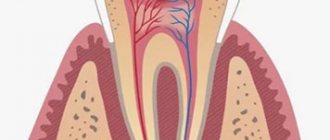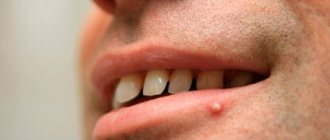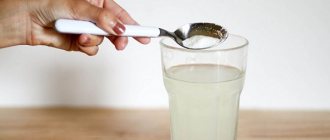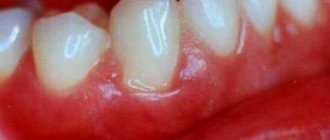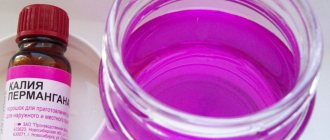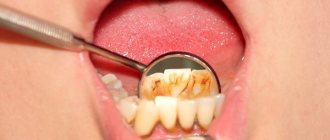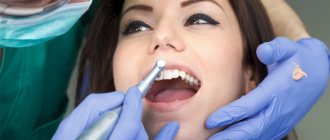Our teeth are not only dense organic tissues covered with hard tooth enamel. Hidden inside each tooth is a complex system of blood vessels and nerve endings, which is necessary to maintain the health of the dentition. The sensitivity of soft tissues in the oral cavity is tens of times greater than the sensitivity of other organs. Therefore, any infection that gets inside the tooth causes inflammation and severe pain. Pathology is also provoked by temperature changes: burns or hypothermia. Unbearable pain forces a person to treat pulpitis and seek help from a dentist.
Will we treat him or let him live?
Often the fear of doctors forces us to make do with improvised methods. We take painkillers, fast, endure, in the hope that the sharp pain will go away on its own. Is it really possible to “wait out” an exacerbation, or is it better to get professional help in time? Let's figure it out.
To find the right method of treating a disease, you need to know the origins of its occurrence. The core of the tooth, or pulp, is responsible not only for tooth sensitivity, but also for the production of dentin. The tissue strengthens the tooth from the inside.
The anatomical features of the pulp depend on the type of teeth. In the lateral row, as a rule, there is a chamber with three dental canals. The front row and incisors each have one branch. It is logical that molars are much more difficult to treat than canines or premolars.
Pathological changes in the pulp tissue form swelling, causing unbearable pain. The pain intensifies upon contact with hot food or when pressing on the tooth.
What else can be used - alternative methods
Traditional medicine offers many tips on how to quickly relieve acute symptoms of pulpitis. For example, on the Internet you can find recipes using sprouted wheat grains. They are used to prepare porridge or jelly, which is recommended to be consumed internally every day. Another rather controversial remedy is a garlic compress, which is recommended to be done on the inside of the wrist, opposite the side where the pain comes from.
Alternative solutions to the problem include treatment methods using laser equipment and physical therapy. After complete cleansing of the carious cavities, removal of all anesthetized tissue and restoration of the affected tissue, the tooth is filled.
Prerequisites
The most common cause of inflammation of the dental nerve (pulp) is the presence of caries. And in a deep stage. The infection reaches the soft tissues through the destroyed tooth tissue, provoking an inflammatory process. A similar situation occurs when a filling falls out or is damaged, when the pulp is “exposed.”
Bacteria can enter the tooth cavity from another source of infection in the body. Inflammation also occurs when a tooth is injured, minerals accumulate in the pulp, or low-quality components are used when filling canals.
Also, treatment of pulpitis may be required if the nerve overheats during preparatory procedures for prosthetics. If there is increased sensitivity, swelling of the pulp can be caused by the use of chemicals during therapy. It is also possible that an infection may accidentally enter the pulp chamber when eliminating a carious cavity.
Reviews
Numerous reviews prove the low effectiveness of home treatment. Patients agree that treatment at home can only be used as an alternative if it is impossible to see a doctor.
We invite those who have had experience in treating pulpitis at home to share their opinions about this in the comments to this article.
This video gives some more tips:
If you find an error, please select a piece of text and press Ctrl+Enter.
Tags home treatment folk remedies pulpitis
Did you like the article? stay tuned
Phases of the disease
Classification of any disease contributes to quick and correct diagnosis and selection of an effective treatment method for the patient. In the case of pulpitis, everything is relatively simple, there are only two subtypes - acute and chronic.
The first type of inflammation occurs with advanced forms of caries. Bacteria destroy tooth enamel and dentin, and the infection enters the pulp. The disease is accompanied by aching, sharp pain, which intensifies with mechanical or thermal effects on the tooth. Severe pain attacks may occur at night.
Interestingly, only adults are susceptible to acute pulpitis. The anatomical structure of a child’s jaw protects him from illness.
This type can be focal or diffuse. Focal inflammation is characterized by local damage to the pulp, located close to the carious cavity. Accompanied by throbbing pain around the affected tooth. Lasts approximately 2-3 days.
Then the process moves to the next stage - damage to all tissues of the dental nerve. The pain syndrome changes from pulsating to constant, unpleasant sensations spread to the entire jaw. Pus forms in the tooth cavity. The phase lasts no more than two weeks. If timely treatment of pulpitis is not started, the pathology enters the chronic stage.
Recipes for rubbing and lotions
A product for rubbing and lotions can be prepared at home, using both medicinal plants and other components. We will share with you recipes that help alleviate the patient's condition.
Ginger
Improves nutrition and blood supply to the pulp, relieves inflammation. Brew 20 g of ginger root in a glass of boiling water, let it brew, strain. Add a teaspoon of soda to the resulting solution. Use for oral baths, repeat every two hours.
Salo
Place a piece of salted lard into the carious hole. Hold until the pain disappears, then rinse with saline solution.
Coniferous resin
Localizes the inflammatory process, disinfects, and has a good effect on the condition of the pulp. Place a piece of resin behind the cheek near the sore tooth and wait until it is completely absorbed.
Calamus root and St. John's wort
Anti-inflammatory and antiseptic drug. Pour alcohol over the herbs and leave for two hours. Every three hours, use a pipette to drop 1-2 drops of infusion into the carious cavity.
Garlic
An effective natural antiseptic. Rub garlic juice into the gum near the sore tooth several times a day. You can put a cut clove of garlic on your wrist.
Eliminate cannot be deleted
A term that patients in all fields of medicine fear is chronic disease. Let's see what the consequences are in our case. Inflammation of the dental nerve with chronic pulpitis lasts from a month to several years. The pain syndrome remains, but becomes less pronounced. Seizures occur periodically. The patient can no longer chew on the side of the diseased tooth. The affected nerve begins to bleed and dentin continues to deteriorate. Chronic pulpitis is also characterized by several phases:
- Fibrous. Relatively “easy” stage. It occurs when carious tissues are not located close to the dental nerve. Unpleasant sensations occur only when you press on the tooth.
- Gangrenous. The pulp tissue is completely infected. The nerve changes color. The pain becomes more noticeable. The tooth is deeply affected by caries.
- Hypertrophic. Bacteria destroy the tooth down to the pulp chamber, connecting both cavities. A polyp grows in the vacated space, causing the nerve to bleed. The pain syndrome persists.
- Exacerbation. The final stage of the disease, when the patient is attacked by periodic attacks of pain, combined with constant aching unpleasant sensations. Pus appears in the tooth cavity, inflammation spreads to the tooth root, and periodontitis develops.
In 90% of cases, doctors treat fibrous pulpitis, less often - the second stage. In general, chronic inflammation is an irreversible process. The only solution is to remove the damaged dental nerve.
General recommendations
First of all, you should follow a number of recommendations to help relieve painful symptoms:
- Periodic rinsing with warm water in the absence of purulent discharge or cool water in the presence of it can relieve severe attacks of pain;
- If any irritants (hot or cold food, sour liquid, pieces of candy) come into contact with an inflamed tooth, they must be removed as quickly as possible to eliminate the pain;
- Avoid chewing food on the same side of the jaw where the sore tooth is located;
- Sleeping on the sore side is not the best solution, because the flow of blood increases blood circulation in the inflamed pulp, which automatically increases pain;
- For pregnant and lactating women, the only way to relieve pain from pulpitis is paracetamol and folk remedies that are not contraindicated for a child;
- If you have not previously had negative reactions to strong painkillers, drugs such as ketanov, ketonal, baralgin, pentalgin-N, and nurofen will provide almost immediate help. However, you should not take them immediately before going to the doctor, otherwise the picture of the disease will be blurry and the dentist will not be able to make a correct diagnosis. It is also impossible to replace the treatment of an inflamed pulp with constant use of painkillers, otherwise the acute form of the disease will soon become chronic with a huge number of complications and consequences. And for health, frequent, uncontrolled use of painkillers is very harmful;
- Do not apply analgin to a sore tooth under any circumstances! This will not bring relief, but it can cause harm to soft tissues and destroy tooth enamel;
- But applying a cotton swab moistened with two or three dental drops is very worthwhile, since they have a positive effect on the inflamed tooth;
- Another medicine that helps with pulpitis is dimexide. It is anti-inflammatory and is actively used by doctors in treatment in the form of applications to the diseased area. True, this drug also has several unpleasant sides. Firstly, it has a terrible smell that causes disgust and nausea. Secondly, allergic reactions occur quite often when using it, so if you have not previously had experience using dimexide, it is better not to risk it.
Survey
To determine an accurate diagnosis, the dentist conducts an initial examination. Because If pulpitis develops against the background of other diseases, then diagnosis includes 4-5 stages. The procedure begins with communication with the patient. It is important to understand at what stage the inflammation is, which is especially important in chronic pulpitis. Therefore, the doctor asks you to describe in detail the nature of the pain. Then a “manual” examination is carried out using medical instruments (dental mirror, etc.). Additionally, the doctor checks the sensitivity of the affected tooth for temperature changes and exposure to a weak electric current charge.
The examination is completed by an X-ray examination to assess the condition of the dental nerve and canals. After collecting information and analyzing the image, the doctor plans the pulpitis treatment process and coordinates it with the patient.
Forecast
The prognosis for home treatment can be favorable only if it was started at an early stage of the development of the pathology and is combined in nature, including both drug treatment and traditional methods.
It is impossible to eliminate the disease only with the help of folk remedies . A prolonged absence of proper therapy will lead to a complication of the situation and the occurrence of a purulent process.
With the use of drug therapy, complete cure is possible . But, unfortunately, after such treatment, relapse occurs in 90% of cases .
The best option is conservative treatment in a clinical setting, where a specialist will provide competent therapy.
How to deal with the disease
At the initial stage, it is not difficult to cope with pulpitis. The nerve in the tooth is preserved, and the doctor relieves the inflammation using therapeutic procedures.
The biological treatment method eliminates inflammation through antibacterial treatment of the damaged tooth, without removing the nerve. After removing carious tissue and disinfecting the pulp chamber, the dentist applies a compress with calcium hydroxide and fixes a temporary filling.
Then, after 3-7 days, during a follow-up visit, the doctor takes an x-ray. If there is no inflammatory process, then a permanent filling is installed. However, this technique requires a highly qualified doctor, so it is rarely used. For example, with traumatic inflammation of the dental nerve.
Preserving the pulp is important because... If it is present, the tooth is constantly strengthened due to the production of dentin. Conservative therapy has age restrictions - it is carried out up to 30 years.
Causes of pulpitis
The main reason causing the development of pulpitis is caries, the treatment of which was not carried out on time. If a person delays treatment of caries until the last minute and does not go to the dentist, his risk of encountering pulpitis is extremely high, because caries is a constantly progressive disease that destroys tooth tissue. And sooner or later the destructive process reaches the pulp. Therefore, one of the basic principles of pulpitis prevention can be formulated as follows: if you don’t want to encounter pulpitis, don’t delay caries treatment!
Treatment of pulpitis will be much more complex and expensive than treatment of caries. Moreover, when treating advanced pulpitis, it is not always possible to save a tooth. Therefore, you need to forget about the fear of dentists and always consult a doctor in a timely manner for the treatment of caries! Nowadays, there are technologies that make it possible to successfully treat caries without pain and discomfort for the patient - for example, dental treatment under sedation, treatment without drilling a tooth.
Less commonly, pulpitis and the need for its treatment may arise for the following reasons:
1. Low quality of dental treatment. If, when treating caries, the dentist incorrectly treats the carious cavity or makes other mistakes and inaccuracies, tooth pulpitis may develop under the installed permanent filling.
2. Low quality of teeth preparation for prosthetics. Before prosthetics, the teeth are ground for the future prosthesis, and if, while working with a living tooth, the dentist overheats its tissues, pulpitis may develop. This will not happen immediately, but after some time, but pulpitis under the crown is almost always a sign of poor quality work by the orthopedic doctor. To treat pulpitis, the crown will have to be removed.
If you do not want to encounter pulpitis and other complications after poor-quality dental treatment, you must remember one simple rule: for dental treatment, you should not choose a clinic at the lowest price, but find out all the available information on its equipment and the level of qualifications of the doctors working there!
3. The cause of the development of pulpitis can also be gum disease. For example, periodontal disease causes exposure of tooth roots, and at the same time, a deep periodontal pocket is formed in the area of contact between the gum and tooth, in which pathogenic microorganisms will actively develop, causing the appearance of caries and then pulpitis. Therefore, treatment of gum inflammation also does not need to be postponed; if you see that your gums are inflamed, be sure to visit the dentist’s office!
Very rarely, pulpitis occurs due to injuries leading to tooth fracture. If the injury damaged not only the pulp, but also the root of the tooth, the only treatment that can be done is to remove the tooth.
For whatever reasons, pulpitis appears, its treatment must be carried out as urgently as possible. Timely and high-quality treatment of pulpitis makes it possible to keep the tooth alive, and, as you know, your natural teeth are better than any dentures!
Partial and complete nerve removal
Partial extraction of the pulp is also acceptable if the coronal component of the nerve is separated from the root. To prescribe surgery, there must be a large volume of intact periodontal tissue.
The procedure is performed under anesthesia for patients under 45 years of age.
In practice, pulpitis is treated surgically. The nerve is completely removed, which saves the patient from relapse and re-treatment.
Pulp removal occurs in two ways:
- Extraction of living nerve.
- Preliminary killing of the pulp (devitalization) with further removal.
In the first option, all work is carried out in one session. The dentist removes the affected tooth tissue, thoroughly disinfects the cavity, and then removes the inflamed nerve. At the final stage, a filling is installed.
If it is not possible to remove the living nerve from the tooth, it is treated with medical paste made from arsenic or paraformaldehyde. After 1-2 days, the pulp dies and is painlessly removed. Patients cannot always visit the doctor the next day; in this case, the dentist fixes a less concentrated composition for up to two weeks. A temporary filling is placed on top. During the next visit, the doctor treats the canals with an antiseptic and fills the tooth. Important: this method of treating pulpitis is not applicable in the presence of pus and dead tissue in the pulp.
How is pulpitis treated surgically?
As we have already noted, there are two possible options for surgical intervention:
- treatment of pulpitis using the amputation method with partial preservation of the pulp;
- treatment with complete removal of soft tissues, blood vessels, and nerves.
If there is an objective possibility, the doctor will remove only the top of the pulp - from the crown, leaving the root part. The blood supply and sensitivity (innervation) of the tooth will be preserved. The technique is used in the treatment of children - for milk or permanent teeth that have not yet fully grown. This allows them to form normally in the future. Treatment for pulpitis can be carried out in one visit.
How is therapy carried out?
The process of extracting the dental nerve may require 2-3 visits, depending on the number of roots in the tooth. The time interval between sessions is prescribed by the doctor, in accordance with the diagnosis.
Traditionally, treatment of pulpitis consists of 4 stages:
- Application of local anesthesia. Nerve endings are very sensitive to any impact, so painkillers are indispensable.
- If caries is present, the affected tooth tissues are first removed. Sometimes it is necessary to remove a healthy part of the tooth to gain access to the pulp.
- Using a special tool, a pulp extractor, the dental nerve is extracted. Depending on the stage of the disease, the pulp is pre-treated with arsenic or extracted alive.
- The dental canals are measured and thoroughly disinfected.
After treatment, the tooth is filled: first the root canals, then the upper, coronal part of the tooth. In difficult cases, for example, with chronic pulpitis, the doctor fixes filling materials only in the canals in order to track a possible relapse of the disease. If inflammation reappears, then intermediate therapy is prescribed using antibiotics.
After installation of a permanent filling, the patient may experience pain. This usually lasts no more than 2-3 days, with a reaction to cold foods and drinks. If the discomfort continues, then the inflammatory process has resumed, and you need to visit the dental office as soon as possible.
Rinse
To relieve pain caused by inflammation of the pulp, rinsing with tinctures or decoctions of medicinal herbs is often used at home. This procedure has many advantages:
- relieves pain;
- reduces swelling and itching;
- eliminates pathogens;
- prevents the spread of the inflammatory process to healthy tissue.
For rinsing to be beneficial, it is necessary to repeat it after 2-3 hours and use water at a temperature comfortable for the oral cavity.
.
To prepare medicinal decoctions, dentists recommend using various plants: chamomile, dry sage, oak or willow bark, elderberry.
Sage
To prepare the decoction, you need to pour 5 tablespoons of dried sage with two glasses of hot water, bring to a boil over the fire and continue to simmer for 35-40 minutes. The liquid should sit for at least two hours, after which it should be strained, cooled and used to rinse the mouth every 2.5-3 hours.
A decoction of sage will help reduce fever, reduce pain and eliminate pathogenic microorganisms from the carious cavity.
willow bark
The peeled willow tree bark is thoroughly crushed using a grater or a sharp knife, after which two tablespoons of this substance are poured into a glass of boiling water and left for 40-50 minutes.
A well-strained product can be used to rinse the mouth to relieve pain, inflammation and swelling. Rinsing should be done less than three times a day, preferably after eating.
Bay leaf
The leaves of the bay tree must be thoroughly crushed, then pour a tablespoon of the resulting crumbs with a glass of boiling water and leave for about two hours.
The liquid filtered through gauze is used to rinse the painful area of the mouth three to five times a day. The resulting medicinal solution helps reduce swelling of the gums, reduce the number of bacteria and slow down the development of the inflammation process.
Knotweed and elderberry
To prepare a healing decoction, dried elderberry and knotweed flowers are crushed, then mixed in a small container, a full tablespoon of each herb, and poured with a liter of boiling water. The solution, steeped for one hour, is filtered and used to rinse teeth every 2-3 hours.
This medicinal composition has antiseptic, anti-inflammatory and analgesic effects.
Pomegranate peel
The peel of one or two pomegranate fruits must be cut, pour a liter of boiling water and simmer over low heat for 2 hours. After cooling, the liquid is filtered and used for rinsing every three hours.
This remedy helps prevent the progression of the disease and relieves the pain associated with it.
Propolis with calamus
The solution is prepared as follows:
- 3 tablespoons of dry propolis must be thoroughly crushed;
- the resulting mass should be poured with alcohol in an amount of 100 ml and left in a dark place for 3-4 days;
- Add calamus tincture to the strained alcohol infusion at a ratio of 1:2.
To rinse the mouth, you need to dilute a tablespoon of the prepared infusion with a glass of boiled or filtered water.
The effect of the product is to disinfect the cavity present in the molar and reduce inflammation of the gum tissue.
Soda
To prepare the solution, a teaspoon of soda is dissolved in a glass of boiling water. After the liquid reaches room temperature, rinse the oral cavity thoroughly, especially the area of inflammation. It is important to rinse at least three times a day, half an hour after meals.
A soda solution helps to disinfect the affected area of soft tissue, relieve inflammation and reduce pain.
Peroxide
Rinse the mouth with an aqueous solution of hydrogen peroxide three times a day. They will help eliminate infection from the carious cavity, reduce the number of pathogenic organisms in the mouth, thereby preventing the progression of the disease.
Children's horror stories
The phases of disease progression at a young age are approximately the same. But unlike adults, children's pulpitis develops many times faster. A small hole in the tooth is enough for the infection to cause inflammation in the pulp chamber. Accelerated pathological processes can lead to infection of the soft tissues around the tooth, which can lead to problems with the growth of molars. Therefore, if a child complains of toothache, it is important to consult a doctor immediately.
The question often arises: is it possible to treat pulpitis or is it still necessary to remove the dental nerve in children? An experienced dentist always strives to preserve both the baby tooth and the pulp. Because the absence of teeth in a row can affect the location of neighboring teeth, change the bite, and even diction.
In the case of baby teeth, the dentist uses special filling materials that dissolve over time and do not interfere with the growth of the permanent dentition.
Gentle drugs that are hypoallergenic and safe for babies are used as pain relievers.
Folk remedies
In addition to traditional remedies used to relieve pulpitis, traditional medicine will also help relieve pain. Here is a small list of the most effective of them:
- A couple of drops of clove oil, applied to a small piece of cotton wool and applied to the sore spot, will reduce the severity of pain after some time. You can also try applying dried cloves, only before applying it you need to chew it a little, otherwise the essential substance will not be released;
- Fresh or salted lard applied to the inflamed area relieves pain well;
- Gargling with decoctions of St. John's wort, sage, chamomile, cloves, and elderberry flowers is very useful. You can also use an infusion of wine vinegar and mint and raspberry leaves. However, the preparation time for such an infusion is three days, so there is no need to talk about emergency assistance when using it;
- Another version of the decoction is prepared from two tablespoons of chopped turnips, which is poured with a glass of boiling water and boiled for ten to fifteen minutes;
- Suitable for relieving pain and rinsing with water with a drop of tea tree oil, as well as a solution of salt and soda;
- Alternative medicine also suggests applying the following remedies to an inflamed tooth: ice, raw beets, a leaf or stem of wild garlic crushed to a pulp, leaves of coltsfoot or horse sorrel, plantain root, juice from angelica leaves, propolis, “Asterisk” balm. , iodine (you should be very careful with the last three remedies, as they can severely burn the soft tissue of the gums and cheeks);
- Acupressure in the area of the inflamed area is very effective in reducing pain, if it does not cause even more pain.
One of the most favorite means of relieving all types of pain in Russia is alcohol. However, most often they try to take it orally, which should not be done, since pulpitis and alcohol are bad traveling companions. The only correct use of alcohol-containing drinks for inflammation is applying a moistened cotton swab or rinsing, but even here it is important to remember a few simple rules:
- Do not use pure alcohol!
- Do not rinse your mouth with sugar-containing drinks; only pure ones will do: gin, vodka, whiskey, cognac.
- Do not swallow the drink after rinsing.
Of course, alcohol can relieve pain for a short time and disinfect the problem area, but it will not cure inflammation.
Despite the fact that all these methods relieve pain for a short time, pulpitis still cannot be cured with tablets, so you should not put off visiting a doctor. Even if you are very afraid to treat pulpitis, anesthesia will make this procedure completely painless and quick. The process of tooth depulpation is carried out as follows: the damaged area is drilled out, the doctor uses special tools to remove the inflamed pulp and cleans the tooth cavity. If it is not possible to completely clean out all the soft tissue, arsenic, or rather a paste containing this substance, is used to treat pulpitis. It mummifies and dissolves the remaining pieces of nerve and pulp. Then the tooth cavity is thoroughly cleaned, disinfected and sealed.
Indications during pregnancy
There is a myth that it is impossible to treat teeth while expecting a baby. This misconception can have serious consequences. Infection, for example in the form of caries, through blood vessels can spread throughout the body.
It is also a mistaken belief that x-rays harm the development of the fetus. It has been proven that modern equipment has a minimal radiation dose that does not affect the body. It is much more dangerous to bring the inflammatory process to a chronic state. Therefore, you should not delay treatment of pulpitis or caries when symptoms appear.
The process of bearing a child is associated with a decrease in immunity, and as a result, with increased sensitivity to bacteria and infections. Tooth enamel in pregnant women is not as strong, because... All nutrients are aimed at the growth of the baby. Therefore, the appearance of pulpitis and deterioration in the condition of the dentition is a normal phenomenon.
The second trimester is considered the optimal period for receiving dental care. During this period, the child is protected by the placenta from harmful substances. However, if an inflammatory process occurs in the dental nerve, it is not recommended to delay treatment so as not to expose the baby to unnecessary risk.
During pregnancy, the doctor chooses a gentle treatment method, when the filling is fixed only in the dental canals. If possible, without the use of anesthesia. After childbirth, the patient is given a permanent filling. X-ray examination is carried out only in emergency cases.
How much does tooth treatment for pulpitis cost?
The final cost of pulpitis treatment is influenced by many factors: the degree of destruction of hard tissue, the number of canals in the tooth, the presence of complications, concomitant diseases, and the chosen treatment method. If the tooth is permanent and has one canal, then the procedure in Moscow clinics will cost from 5,000 rubles. This amount includes a full range of services: x-ray diagnostics, application of anesthetic, installation of a rubber dam, treatment of caries, treatment of dental canals with cleaning, installation of a filling. Price may change if multiple sessions are required.
Inflammation of the nerve in the wisdom tooth
Eights have their own specifics, and the doctor often chooses to remove the tooth. The complexity of therapy is due to the anatomical features of the third molars. Curved roots, lack of access to the tooth, partial overlap of the gums equates the treatment of pulpitis in figure eights to jewelry work. And it requires experience and high qualifications of a doctor.
An inflamed nerve in a wisdom tooth can be treated by filling the canals. Provided that there is access to the root and the dental canals have good patency. It makes sense to preserve a tooth in the presence of an antagonist tooth, if the tooth is involved in the chewing process and is used when installing a prosthesis.
Treatment of acute pulpitis
The above methods are ineffective in treating exacerbations of chronic pulpitis, an acute disease when the tooth becomes a source of unbearable pain radiating to the ear, temple, and back of the head. With these symptoms, endodontic treatment of pulpitis is carried out - with cleaning of the root canals and complete removal of the pulp.
In dentistry, two modern methods of treating tooth canals for pulpitis are used: devital and vital.
- Treatment of pulpitis using the vital amputation method is carried out by removing the nerve, washing, cleaning and filling the canal.
- Devital treatment of pulpitis involves the use of medicinal pastes and requires several sessions.
These treatment methods are most often used for pulpitis on permanent teeth.
Consequences of depulpation
Sometimes patients experience severe pain after depulpation. There may be several reasons for this phenomenon, and here are some of them:
- individual reaction of the body to dental intervention - you need to wait a little, and the pain will disappear by itself,
- mistakes made by the dentist - incompletely cleaned canals or removed nerves, poor quality of filling, use of several types of filling materials at once,
- inflammation of soft tissues – may result from damage to the gums during treatment,
- painful sensations in a neighboring tooth can radiate to the healed tooth and thereby confuse the patient.
If after removing the pulp you experience obvious pain, which also does not subside, you should contact your dentist again. If this is a natural reaction to treatment, your specialist may suggest additional anti-inflammatory measures. If the problem is complications, you will have to unfill the tooth and eliminate the cause of the problem.
